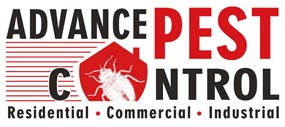Woodpeckers Control
Woodpeckers belong to the Picidae family , which also includes the piculets, wrynecks, and sapsuckers. Members of this family are found worldwide, except in the extreme polar regions of Australia, New Guinea, New Zealand, and Madagascar. Members of that family are recognized primarily for their characteristic behavior.
Woodpecker Identification
There are over 2000 species of woodpeckers, ranging from 7 to 15 inches in length, and usually with brightly contrasting coloration. Most males have some red on the head and many species have black and white marks. Woodpeckers have short legs with two sharp-clawed, backward-pointed toes and stiff tail feathers, which serve as a supportive prop. They primarily feed on tree-living or wood-boring insects using their strong beak and long tongue to dislodge food. Some members of the Woodpecker family (Flickers) feed on insects off the ground, while others prefer native berries, fruit and nuts.
They forage mostly on the trunks and branches of trees for insect prey, and often communicate with their beak by drumming; producing a reverberating sound that can be heard at some distance. Some species vary their diet with seeds, eggs from birds, small animals, and sap from wood, human waste, and carrion. They often nest and roost in holes they excavate in tree trunks, and other cavity-nesting birds add importance to their abandoned holes. Sometimes when they make holes in buildings or feed on fruit crops, they come into conflict with humans but perform a useful service by removing insect pests on trees.
Why Woodpeckers peck?
The first step to avoid harm to woodpeckers is to know why the birds peck. For one of three reasons, woodpeckers usually peck for:
Drumming: Simple drumming behavior is designed to make noise, either to attract a mate or to advertise that claims are made in nearby territory. Damage caused by this type of pecking is usually minimal, but can lead to additional problems, and frustrating the constant noise.
Feeding: Woodpeckers forage for insects by prying or drilling for various types of beetles, larvae and other pests into the wood. If the source of food is large, woodpecker damage can be quite extensive, though the holes are often shallow.
Nesting: Woodpeckers are cavity-nesting birds requiring a hollowed out nesting site, and extensive drilling at one site may be a nest excavation. Although several other test sites may be excavated to a lesser extent, this damage will be localized in one region. A nesting hole will be quite large and deep, but will have only one entrance.
Woodpecker Control Methods
Redirecting woodpeckers can keep them in the same region but will discourage them from drilling, pecking, or drumming.
Tree Removal: Remove large trees or prune branches close to the house or wherever the birds peck so they feel more vulnerable and exposed. This can encourage them to stay on the house in a thicker cover, rather than pecking. Replanting other bird-friendly landscaping such as flower beds and shrubs will make the yard equally appealing to other birds without promoting woodpecker behavior.
Fix Holes: Use wood putty or cover shingles and planks already successfully drilled by woodpeckers. Paint or stain over the repair to camouflage the site further to prevent any insects from entering the damaged region. This removes the visual indication that the area is good for drumming or drilling, and that the birds are more likely to move forward.
Covering Wood: Woodpeckers find it attractive to cover the wooden areas with foam, netting, or cloth that can keep them from reaching the wood to peck. Adding chicken wire or fishing line 1-2 inches away from the surface can also prevent the birds from touching the wood, but it would have to be permanently left up to be the most successful.
Pest control: If the insects feed on the houses wooden frame, please contact an insect inspection service. Pest treatments to eliminate these insects will remove that tempting source of food and feed woodpeckers elsewhere.
Hiring Pest Control
Even the use of several deterrents from woodpeckers may not be effective in extreme cases. If this happens, a last resort to stop woodpecker house damage can be to contact local wildlife control offices or pest control companies with experience in discouraging pest birds. However, most birders have no trouble discouraging the pecking of woodpeckers, it only takes time and experimentation to determine the most effective methods for different woodpeckers on different houses.
As professionals, we know that every pest comes with a different set of problems, thus we first carry out the necessary examination of the property and then come up with a plan of action best suited to your need. Not only cost effective but our service is also safe your children. Through a series of advancement, we have adapted to complete environment friendly methods, call us today and we will be at your doorstep.
